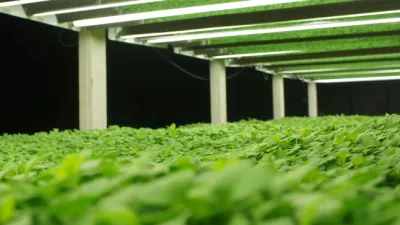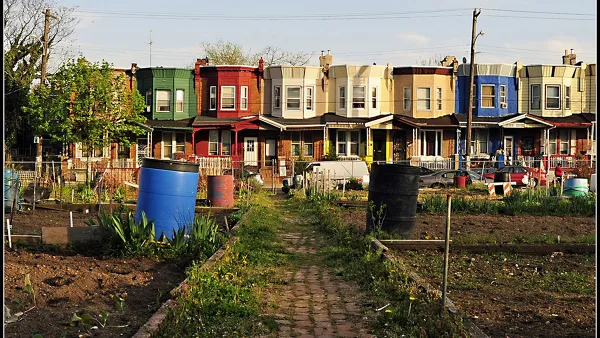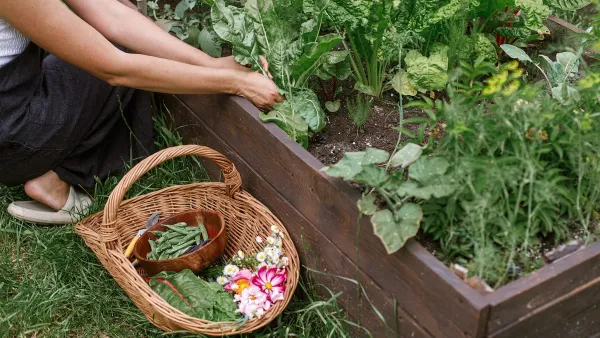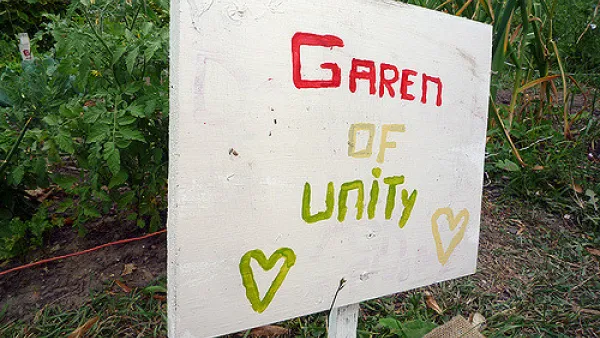Urban agriculture likely has more social than material impacts. But who does it benefit most?

With the continued popularity of urban agriculture and community garden programs, Vox sets out to determine their true value. Specifically, writer Brad Plumer asks, "Are there real social or environmental benefits to growing food within city limits? Or is urban farming just a well-meaning but ultimately insignificant hobby for urban elites?"
Plumer explores a May study from the Johns Hopkins Center for a Livable Future that found, in so many words, that "the actual food grown in community gardens and urban farms nowadays is their least important contribution."
Undeniably, many people in American cities cannot easily access healthy or fresh food. But today, that’s a failure of distribution, rather than of production. "We're not suffering from a dearth of cropland," Plumer writes.
Rather, in some cities, urban agriculture has been found to increase social bonds and provide a forum for science education, civic engagement, youth development, and workforce training.
Still, even these social impacts can cut both ways, depending on how, where, and by whom the programs are administered. "Urban farms aren't always as inclusive as they aspire to be—and there are often huge class divides," Plumer writes.
A number of case studies have found that urban farms and gardens — both for-profit and non-profit — have been led by mostly white non-residents in predominantly black and/or Latino neighborhoods, unintentionally excluding people of color from participating in or reaping the benefit of such efforts.
Moreover, Plumer adds that "when a community garden is established in a neighborhood, property values typically shoot up in the surrounding area. This can also raise thorny issues around gentrification and displacement in low-income areas."
And the study found that when urban ag initiatives are led by low-income communities and communities of color, they are often stymied from realizing their full potential by "disparities in access to land, government funding, and political support compared to urban agriculture efforts led by white and middle-class groups."
FULL STORY: The real value of urban farming. (Hint: It's not always the food.)

National Parks Layoffs Will Cause Communities to Lose Billions
Thousands of essential park workers were laid off this week, just before the busy spring break season.

Retro-silient?: America’s First “Eco-burb,” The Woodlands Turns 50
A master-planned community north of Houston offers lessons on green infrastructure and resilient design, but falls short of its founder’s lofty affordability and walkability goals.

Delivering for America Plan Will Downgrade Mail Service in at Least 49.5 Percent of Zip Codes
Republican and Democrat lawmakers criticize the plan for its disproportionate negative impact on rural communities.

Test News Post 1
This is a summary

Test News Headline 46
Test for the image on the front page.

Balancing Bombs and Butterflies: How the National Guard Protects a Rare Species
The National Guard at Fort Indiantown Gap uses GIS technology and land management strategies to balance military training with conservation efforts, ensuring the survival of the rare eastern regal fritillary butterfly.
Urban Design for Planners 1: Software Tools
This six-course series explores essential urban design concepts using open source software and equips planners with the tools they need to participate fully in the urban design process.
Planning for Universal Design
Learn the tools for implementing Universal Design in planning regulations.
EMC Planning Group, Inc.
Planetizen
Planetizen
Mpact (formerly Rail~Volution)
Great Falls Development Authority, Inc.
HUDs Office of Policy Development and Research
NYU Wagner Graduate School of Public Service





























